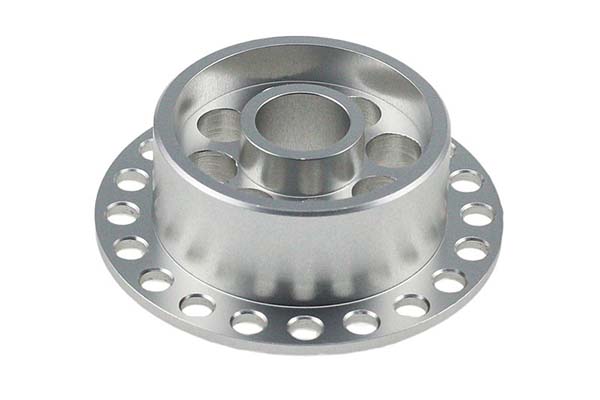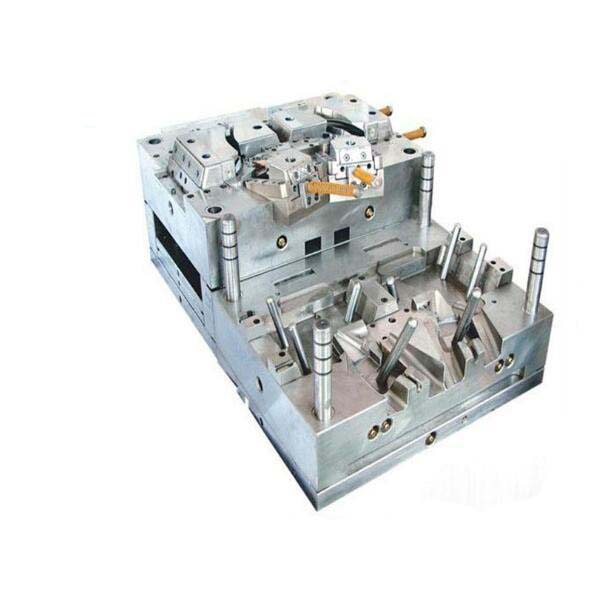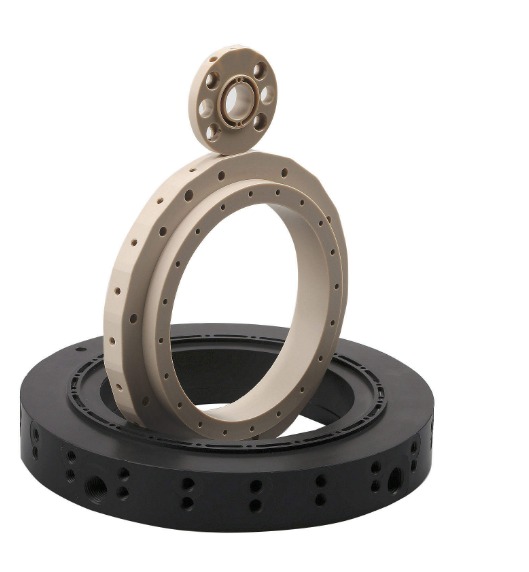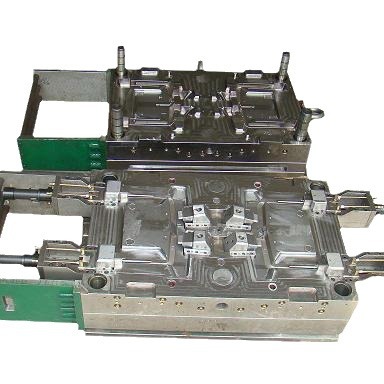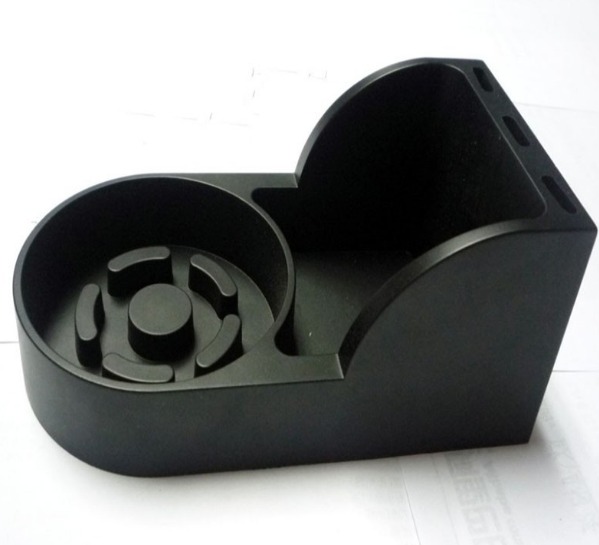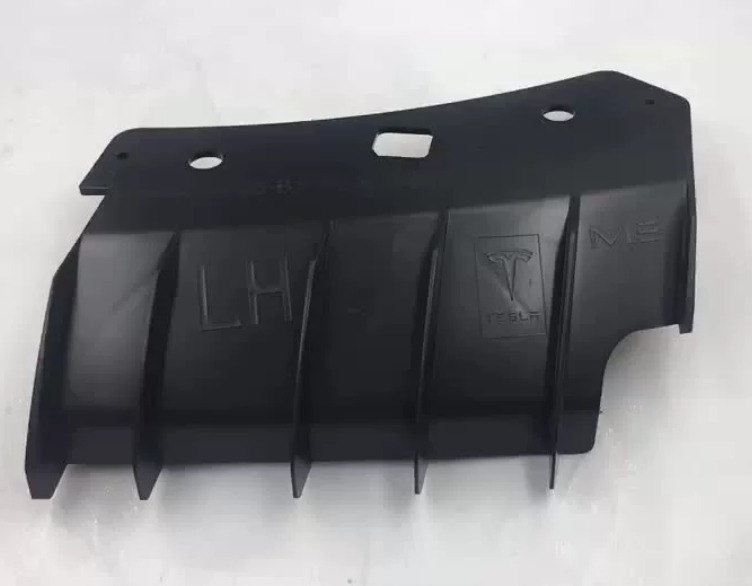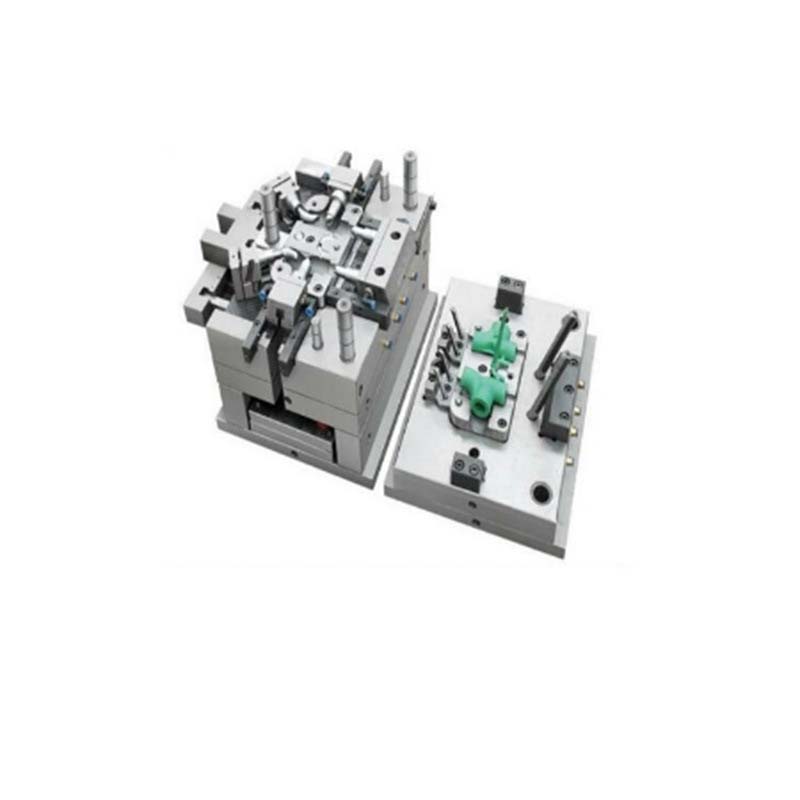Introduction
In the realm of modern manufacturing, precision is no longer a luxury but a necessity. From the tiniest components in a smartphone to the complex parts of aerospace machinery, the demand for high - precision manufacturing has been steadily on the rise. And at the heart of this pursuit of precision lies Metal Molding Steel.
Metal Molding Steel is an indispensable material in precision manufacturing. It serves as the cornerstone upon which countless high - tech products and advanced industrial components are built. For Yigu Technology instance, in the electronics industry, where components are getting smaller yet more powerful, Metal Molding Steel enables the production of intricate circuit board connectors with micron - level precision. These connectors need to be manufactured with such exactness to ensure seamless electrical connections, and Metal Molding Steel provides the necessary mechanical properties to achieve this.
In the automotive sector, precision - manufactured steel parts are crucial for engine performance and vehicle safety. Metal Molding Steel allows for the creation of engine components like crankshafts and camshafts with tight tolerances. A well - made crankshaft, produced using high - quality Metal Molding Steel, can improve fuel efficiency and reduce engine vibrations, ultimately enhancing the overall driving experience.
As technology continues to advance, the role of Metal Molding Steel in precision manufacturing becomes even more pronounced. The following sections will delve deeper into how this remarkable material contributes to the high - precision manufacturing processes that drive innovation across various industries.
What is Metal Molding Steel
Definition and Basics
Metal Molding Steel, as the name implies, is a special - type of steel that is primarily used in molding processes to create precise shapes and components. It is an alloy mainly composed of iron and carbon, with additional alloying elements such as chromium, nickel, molybdenum, and vanadium. These alloying elements are carefully added to enhance specific properties of the steel.
One of the most prominent characteristics of Metal Molding Steel is its high strength. For Yigu Technology example, some high - performance Metal Molding Steels can have a tensile strength reaching up to 1500 - 2000 MPa. This high strength allows the steel to withstand significant mechanical forces during the molding process without deforming or breaking. Good toughness is another crucial property. It enables the steel to resist cracking and fracturing, even under sudden impacts or stress concentrations. A tough Metal Molding Steel can endure the rigors of repeated molding operations, ensuring the long - term reliability of molds and the accuracy of the molded products.
Types of Metal Molding Steel
There are several common types of Metal Molding Steel, each with its own unique characteristics and applications:
- Hot - working die steel: This type of steel is designed to be used in high - temperature molding processes, such as hot forging and hot extrusion. It has excellent heat resistance, being able to maintain its mechanical properties at elevated temperatures, usually up to 500 - 600°C. For instance, H13 steel, a widely used hot - working die steel, contains elements like chromium, molybdenum, and vanadium. These elements contribute to its high thermal fatigue resistance, which is essential when the mold is repeatedly heated and cooled during the hot - working process. It is often used in the production of automotive engine parts, like crankshafts and connecting rods, through hot forging.
- Cold - working die steel: In contrast to hot - working die steel, cold - working die steel is used for molding operations at room temperature or relatively low temperatures. It has high hardness and wear resistance. D2 steel, a popular cold - working die steel, has a high carbon content along with chromium. Its hardness can reach up to 60 - 62 HRC (Rockwell Hardness Scale). This makes it suitable for applications such as cold stamping of sheet metal to produce parts like car body panels and electrical enclosures, where high - precision and long - lasting molds are required.
- Plastic - molding steel: As the name suggests, this type of steel is specifically for plastic injection molding. It needs to have good machinability to be easily shaped into complex mold cavities. P20 steel is a common plastic - molding steel. It has a balance of hardness, typically around 28 - 32 HRC, and machinability. It also has good polishability, which is crucial for creating smooth surfaces in plastic molds. This ensures that the plastic products have a high - quality finish, free from surface defects, and is widely used in the production of plastic toys, consumer electronics housings, and household appliance parts.
The Role in Precision Manufacturing
Precision in Dimension
In precision manufacturing, dimensional accuracy is of utmost importance. Metal Molding Steel plays a crucial role in achieving this high - level accuracy. For example, in the manufacturing of optical lens mounts, the use of high - quality Metal Molding Steel allows for the control of dimensional tolerances within an extremely small range.
Typically, with advanced manufacturing techniques and the right Metal Molding Steel, the dimensional tolerance can be controlled to within ±0.01 - 0.001 mm. In a study by a leading precision manufacturing company, when using a specific grade of cold - working die steel for stamping small metal components, they found that over a production run of 10,000 parts, 98% of the parts had dimensional variations within ±0.005 mm of the design specifications. This high level of precision ensures that components fit together perfectly, reducing the need for post - production adjustments and improving the overall performance of the final product.
Surface Finish Quality
The surface finish of a precision - manufactured product is another critical aspect, and Metal Molding Steel has a significant impact on it. Different types of Metal Molding Steel can result in varying surface qualities.
| Type of Steel | Average Surface Roughness (Ra, μm) | Surface Appearance |
| General - purpose plastic - molding steel (e.g., P20) | 0.8 - 1.6 | Slightly textured, suitable for general plastic products |
| High - quality mirror - finish plastic - molding steel | 0.1 - 0.4 | Smooth, mirror - like surface, ideal for products with high - gloss appearance requirements |
| Cold - working die steel for stamping (D2) | 0.4 - 0.8 | Moderately smooth, with a slightly grainy texture due to its high - hardness nature |
For Yigu Technology instance, in the production of smartphone casings, a high - quality mirror - finish plastic - molding steel is used. The smooth surface finish not only gives the product an aesthetically pleasing look but also reduces the likelihood of dirt and fingerprints adhering to the surface. In contrast, if a lower - grade steel is used, the surface may have visible imperfections, such as pits or scratches, which can affect the product's appearance and marketability.
Material Properties Preservation
During the metal - molding process, it is essential to preserve the material properties of the Metal Molding Steel to ensure product quality stability. Metal Molding Steel is engineered to maintain its mechanical properties, such as strength and toughness, even after undergoing complex forming operations.
Take hot - working die steel as an example. When it is used in hot forging processes at high temperatures, it must retain its hardness and strength to withstand the repeated impact and pressure. The alloying elements in the steel, like chromium, molybdenum, and vanadium, form stable carbides. These carbides prevent the softening of the steel at high temperatures, ensuring that the die maintains its shape and mechanical properties throughout the forging process. This results in consistent - quality forged parts with reliable mechanical performance, which is crucial for applications in the automotive and aerospace industries, where component reliability is a top priority.
Case Studies
High - Tech Equipment Manufacturing
Take a leading high - tech equipment manufacturer as an example. This company specializes in producing advanced semiconductor manufacturing equipment. In the production of the precision wafer - handling robots within their equipment, Metal Molding Steel plays a vital role.
The arms of these wafer - handling robots need to be extremely precise in their movements, with positioning accuracy within ±0.001 mm. By using high - quality cold - working die steel, the manufacturer can achieve the necessary dimensional precision. The high strength and wear - resistance of the steel ensure that the robot arms can withstand the repeated and high - speed movements during the wafer - handling process. Over a period of 5 years of continuous operation, the robot arms made of this Metal Molding Steel only showed a wear rate of less than 0.05 mm, which is far lower than that of other alternative materials. This not only improves the equipment's performance but also significantly extends its service life, reducing the need for frequent replacements and maintenance, thus saving costs for the semiconductor manufacturing process.
Aerospace Component Production
In the aerospace industry, the requirements for component quality and precision are extremely stringent. For instance, in the production of aircraft engine turbine blades, Metal Molding Steel is crucial. Turbine blades operate under extremely harsh conditions, including high temperatures (up to 1500°C in some advanced engines), high pressures, and high - speed rotational forces.
Specialized hot - working die steel is used to manufacture these turbine blades. The heat - resistance of this steel allows the blades to maintain their shape and mechanical properties at high temperatures. The high - strength nature of the Metal Molding Steel ensures that the blades can withstand the high - speed rotational forces without breaking. A study by an aerospace research institution found that when using a new type of hot - working die steel with enhanced alloying elements, the fatigue life of turbine blades increased by 30% compared to the previous generation of steel. This improvement in fatigue life directly contributes to enhanced flight safety. With longer - lasting and more reliable turbine blades, the likelihood of in - flight engine failures due to blade - related issues is greatly reduced, providing a more secure flying experience for passengers and crew.
Conclusion
In Yigu Technology conclusion, Metal Molding Steel is the linchpin of precision manufacturing. Its unique properties, including high strength, toughness, and excellent dimensional stability, enable it to meet the stringent requirements of modern manufacturing processes. Whether it is ensuring the precision in dimension within the tightest tolerances, providing high - quality surface finishes, or preserving material properties during complex forming operations, Metal Molding Steel has proven its indispensability.
Frequently Asked Questions
- What are the main differences between hot - working die steel and cold - working die steel?
Hot - working die steel is designed for high - temperature molding processes, has excellent heat resistance, and can maintain its properties at elevated temperatures (around 500 - 600°C). Cold - working die steel is used for room - temperature or low - temperature molding, has high hardness and wear resistance, with hardness often reaching 60 - 62 HRC.
- How does Metal Molding Steel ensure the long - term stability of precision - manufactured products?
Metal Molding Steel has stable mechanical properties. Its high strength, toughness, and wear - resistance ensure that the components made from it can withstand long - term use, repeated stress, and environmental factors, maintaining dimensional accuracy and surface quality over time.
- In which industries, besides the ones mentioned, is Metal Molding Steel widely used?
Metal Molding Steel is also widely used in the medical device industry for manufacturing precision surgical instruments, and in the optical industry for making components such as lens mounts and precision optical frames, where high precision and durability are required.
